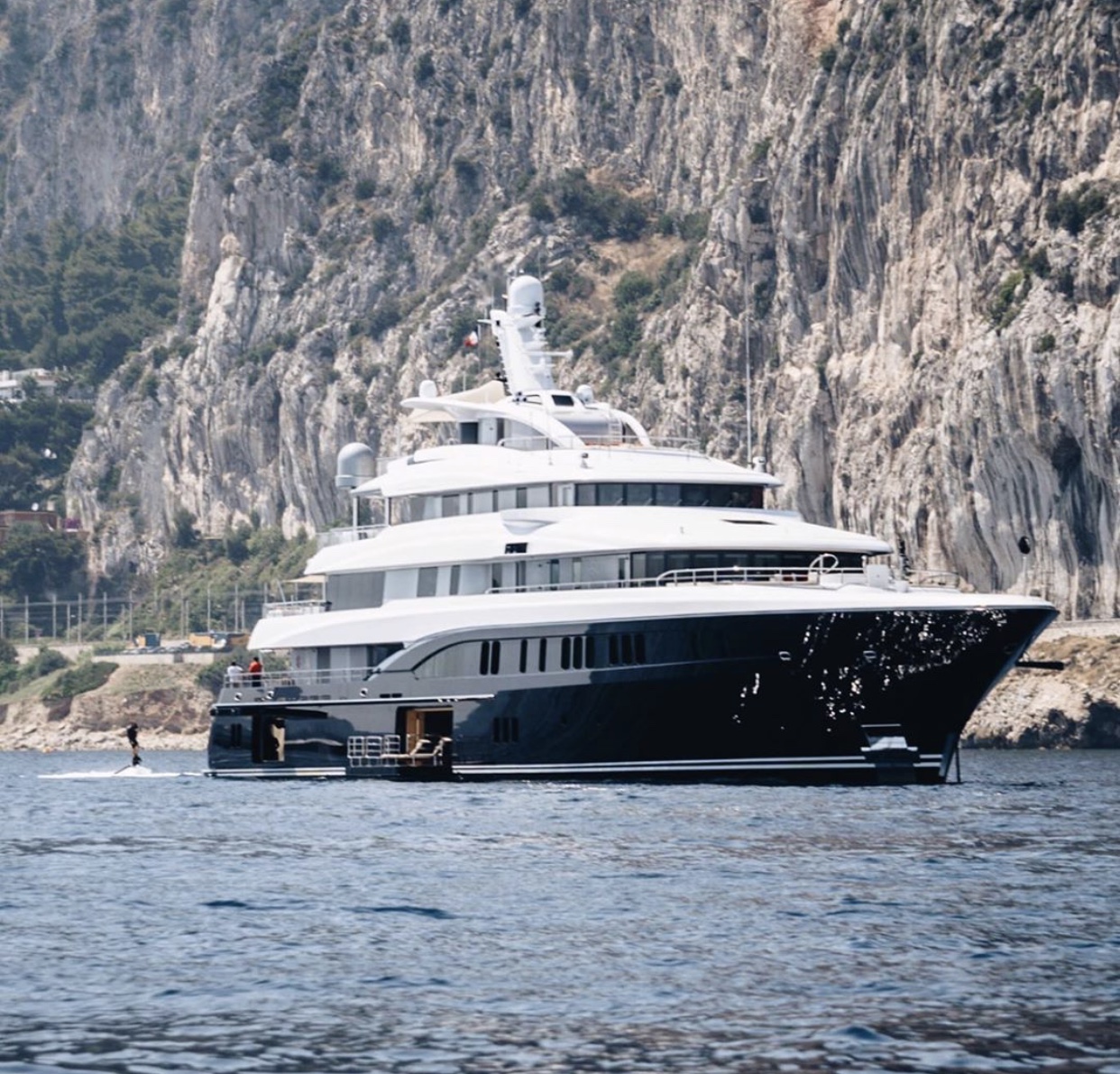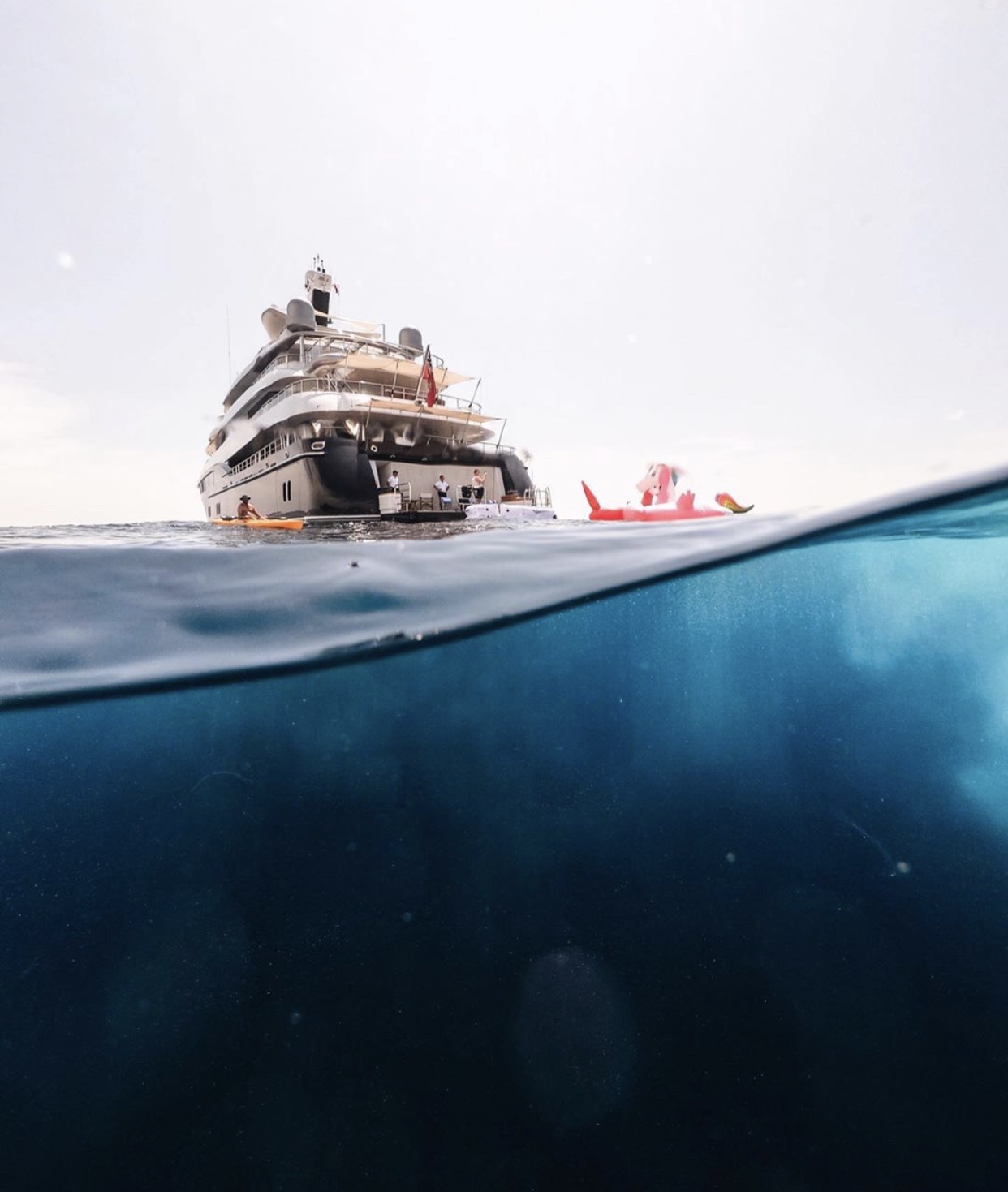Introducing M/Y Arience…
BOAT STATS:

Photo by: @JaredWatney via Instagram
M/Y Arience
Size: 60m
Builder: Abeking & Rasmussen
Year: 2012
Crew: 16
Engines: 2 x MTU 16V 2000 M53R
Total Power: 4010hp / 2990kW
Gross Tonnage: 1632 tonnes
Max Speed: 15.5kts
Fuel Capacity: 114,000 L / 25,076.47 USG
The crew on board M/Y Arience started showcasing the boat by initially taking their 8,700+ Instagram followers along with them during an Atlantic crossing. Led by Captain Pilatti, Deckhand & Content Creator Jared Watney and other crew post regular updates of life on-board, offering an insight to the day-to-day running of a modern-day superyacht from the deck, bridge & interior to the galley & engine room.
This unprecedented behind the scenes look at life on-board has certainly peaked the interest of many people, and the question can be asked ‘with so many of us now intrigued by social influencers, has the time come where charter yachts can use social media to highlight the lifestyle on-board, to entice not only potential charter guests but also provide a realistic look to crew looking to join the industry?’
I wanted to find out more about the engineering in particular on-board Arience, and what goes on in the engine room behind the scenes, Chief Engineer Mike Hughes sheds some light for us in this latest blog post…
Name: Mike Hughes
Nationality: New Zealand
Ticket: Y1 Chief Engineer
Years in yachting: 19
Background: 2 years working as a sub-contractor in a Florida shipyard. Left school & started working as a Fabricator/Welder in a small-town engineering firm.
Time on-board Arience: 2 months
How did you become a superyacht engineer?
I was sub-contracting to a shipyard in Florida as a Fabricator Welder. This is where I was first introduced to the Yachting industry. After a while of enjoying the company of many yacht crew who were passing though the shipyard, I decided to try my hand at being crew. Having met many captains I happened to mention to a couple that I was thinking about switching to a crew position. Luckily one of them introduced me to a vessel that was looking for someone to help with some engineering work on-board.
Did you find it easy to enter the Yachting industry?
To enter into the industry yes, keep in mind this was 19 years ago and the industry has changed a lot over this time. The new rules regarding qualifications were only just starting to come into place so the requirements to have STCW on private vessels were not enforced. Private vessels simply didn’t have to have engineers with formal qualifications. Nowadays, a lot of private vessels choose to run mini or full ISM which means they now require qualified Engineers.
However, to find a good vessel was not so easy. After 6 months of looking for a good position and 4 days before I was due to fly back to New Zealand I got a phone call from a crew agent asking if I was interested in interviewing for a 2nd engineer position on a vessel that was in Mexico at the time. A day later I was offered the second engineer position, and instead of flying to New Zealand I found myself on a plane to Mexico. To which I found my first great crew and I ended up staying with that vessel for 3 years. The rest is history.
Where does your passion for engineering stem from?
In my blood I think, as all I can remember from a very young age is working on mechanical items with my father – he owned an engineering firm in New Zealand.
What aspect of the job do you enjoy the most?
The diversity of the engineering on-board yachts. We have to deal with everything from black water equipment through to the electronics for satellite equipment, PLC’s are common place.
What has been your most memorable moment on-board a yacht?
In my first long-term position, we were based in Mexico and the west coast of America for a while. Wakeboarding and swimming at night in Mexico the phosphorescence in the water was so bright, a big blue stream coming off the board and wake. As well as your arms when swimming. Simply amazing. Much brighter than anywhere else in the world I have seen. The crew were very close. One big family, this was the vessel that got me hooked on yachting.
What has been the hardest part of your job so far?
Being away from my wife and kids. Thankfully being on rotation has meant I do get time at home.
What’s the best place you’ve visited?
Difficult one, inside passage BC Canada up though to Alaska. While cold, the morning air replaced the need for coffee. One deep breath in when stepping outside early in the morning and the energy levels in the body was like an instant rush.
What yachting advice would you give to any first-time engineers in the industry?
Be patient if you can and look for a vessel where you can get some solid longevity (over 2 years), after that great positions will come your way. Keep positive and treat everyone with respect. Remember just because another crew member doesn’t quite understand the need or how something works that you think is simple, if it really was simple everyone would be able to do your job.
Do the internal systems on Arience live up to the expectations of the external appearance of the yacht?
Yes, it has good quality systems. There is always room for improvement, as new technology comes along updates are required. Especially to remain a top charter yacht.
In the engine room, has the boat gone above & beyond the standard requirements expected of an A&R yacht?
Of an A&R yacht, not sure, I think it is pretty much standard. But comparing to other shipyards the quality is well above average. High quality equipment used but kept to simple design and layout, which makes it easier to work on.
With all the photography & videography equipment your crew use, does this require a higher level of AV/IT skills?
There is definitely an increase in required AV/IT knowledge from years gone by, and it’s only going to require a higher knowledge in the future. Though for young crew coming on, due to the era they have grown up in, the base knowledge will be higher so I think most will pick it up quicker.
As an engineer, what do you feel is the most impressive or useful system on-board the boat?
Useful; air conditioning and VSAT (satellite internet) is a must in to keep guests happy. Impressive; the steam ovens in the galley (which are just good quality commercial ovens) The amount of pre-sets and programs for cooking really makes a big difference to the more traditional steam ovens (plus good food means happy crew!)
What is it like being on a superyacht with a huge social media following and having creative influencers on-board?
Well to start with I personally don’t have much in the way of a social media footprint, no twitter or Instagram. I guess time will tell if I do join them or not on the social media side. As a result, I don’t really pay much attention to what they are doing. Maybe I should?? I do think that it can open the door to being judged by others, which is of concern if people are sharing their private or off time life to the world, as often not the full story is really shared correctly. It can also open the door to being held to a higher standard in someone’s personal life. I have been shown some of the videos, and credit where credit is due, they look great. I think this whole idea for showcasing the yacht is still new, and we are learning as we go. I hope it goes well and that the entire picture gets shown; the great parts, but also the long hours & the hard days (not the fake or dramatized stuff you see elsewhere).
Make sure to head over to instagram and follow the journey of M/Y Arience at: @yachtarience
You can also follow their captain: @captainpilatti as well as content creator: @JaredWatney and the Chef on board: @TheYachtChef
If you’re thinking of joining the Industry as an Engineer or want to know more, please click here
Or email me at sam@quaycrew.com.





